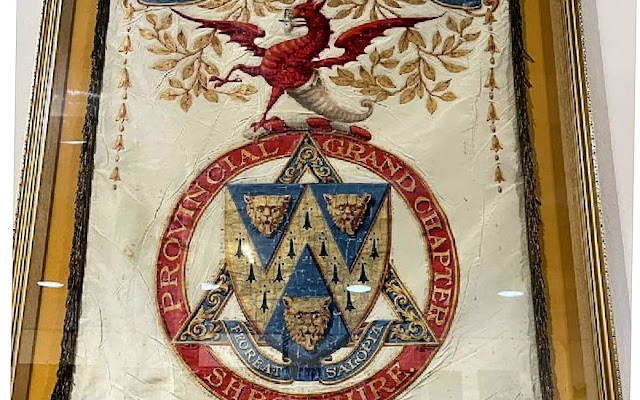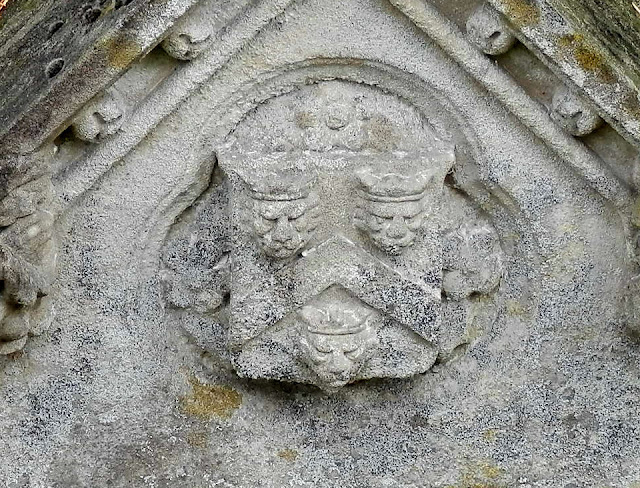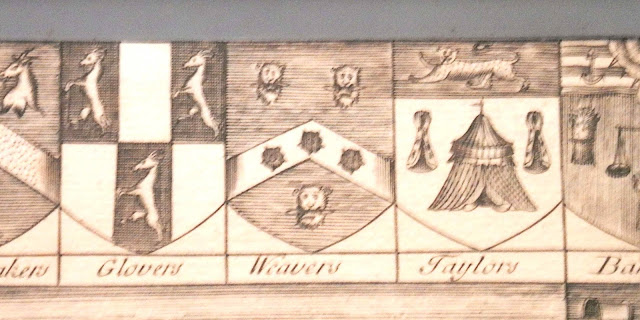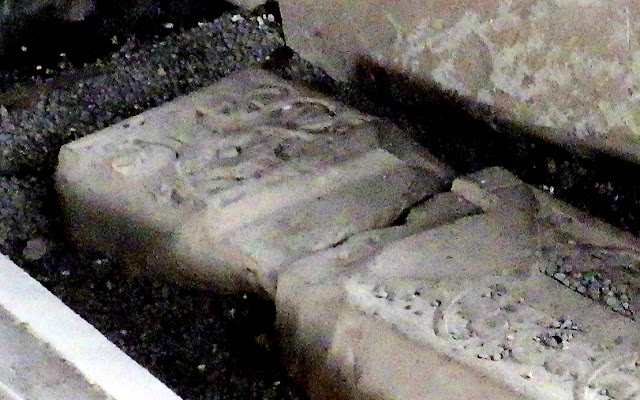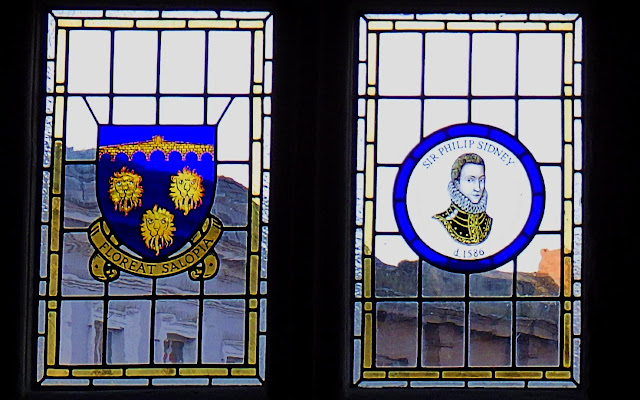
The 'Old Market Hall' cinema-cafe complex in the centre of Shrewsbury displays more than one set of loggerheads. This one, in the cafe windows, celebrates the links between Shrewsbury and the Dutch town of Zutphen - with the town council's arms on the left and a picture of of Sir Philip Sidney on the right.
Sir Philip, who was educated at Shrewsbury and has a statue dedicated to him at Shrewsbury School, died of his wounds at the Battle of Zutphen in 1586.
The photo shows part of the window in the OMH which was created to celebrate the long-standing 'twinning' agreement between the two towns (which only recently came to an end).
+
To comment on this post, just use the Comments field down this page or email us direct.
To get an email alert into your inbox every time we make a new post (about once a week), just click 'Subscribe & Follow' (at the top of the column to the right on this page) and just fill in the form
